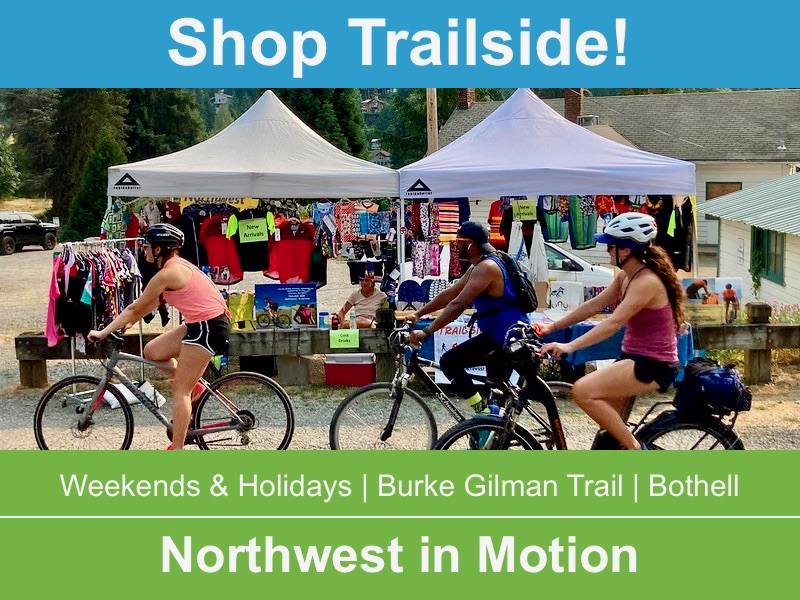Seattle’s Jennifer Wheeler raced professionally in 2011 and 2012 with the TIBCO/Silicon Valley Bank Women’s Cycling Team when, after a couple of hard crashes and unsatisfying results, she quit bike racing and focused on establishing a “normal” work career. She got a job at Microsoft. She tried Crossfit and weightlifting, but those never really quenched her competitive spirit. By spring of 2017 she was back on the bike, and was working with local track Olympian Jennie Reed to get set up to compete on the track at the 2020 Olympics.
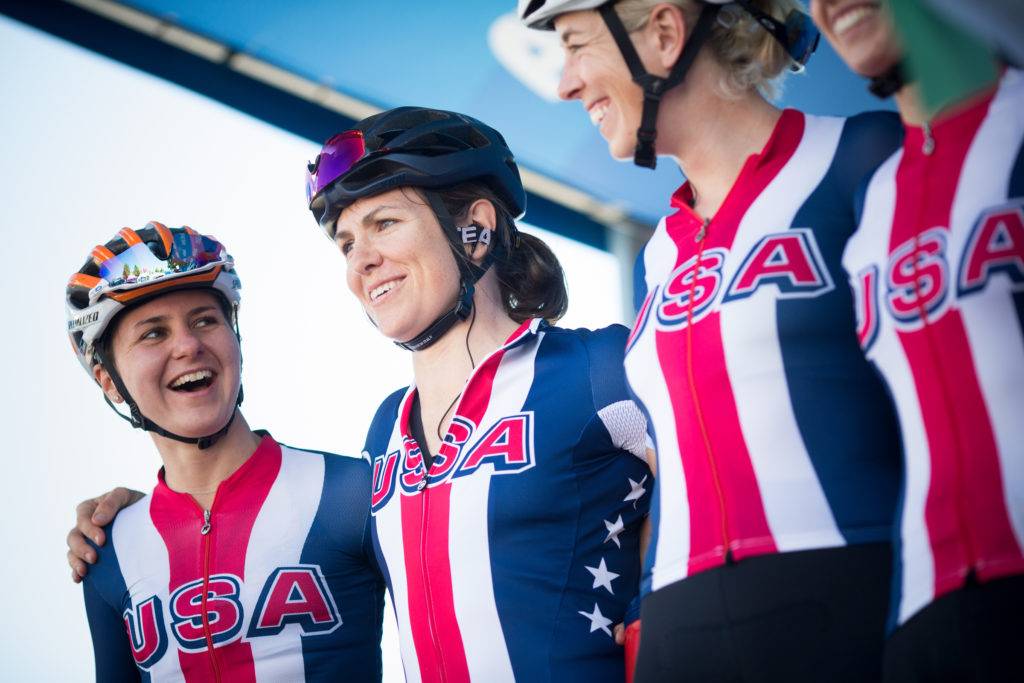
After a lot of hard work with Jennie and her current coach David Richter, she earned a spot at a USA Cycling Talent ID camp held held early this spring. Her participation in that camp led to an invite to join the Women’s USA Cycling Team at this year’s Amgen Tour of California, which happened last week. Since that camp she’s discovered that love and a lighter, less serious approach to training and cycling benefits her more than an obsession with counting every carbohydrate and watt. She is having fun:
“I am definitely fueled by community and connection, so having a crew of friends and supporters to ride with is a game changer for me.”
Recap the circumstances about how you left pro cycling in 2012.
I plunged into professional racing after only one year of racing locally, and I had to learn quickly. In year two as a pro, I was racing the Spring Classics in Europe with the best women in the world. Although it was the adventure of a lifetime, it was very difficult for me to enter the highest level of racing while also trying to manage my life. Racing is a full-time job that only paid $12k/year, which was stressful enough. Then, add some injuries, concussions, and life drama, and I thought it was time to quit “playing” and work on my career.
Six years later how did it feel to get back into a competitive road racing?
It was a surprise. The first year I came back, I focused on technical skills and strength, and the ins and outs of track racing. I am thankful for that experience, but as a lifelong endurance athlete, I just wasn’t having fun. I nearly quit last October, thinking this whole “comeback” thing just wasn’t for me, but then I fell in love and got exponentially faster (They call this phenomenon “love watts”—I’m sure it’s on Web MD.) But seriously, I just started riding with my boyfriend for fun on the road. I would go to almost all the group rides with the Métier crew—including the Rocket Ride, Mercer Island Hot Laps, and get my butt kicked constantly—but it made me better. And I was having fun again. I am definitely fueled by community and connection, so having a crew of friends and supporters to ride with is a game changer for me.
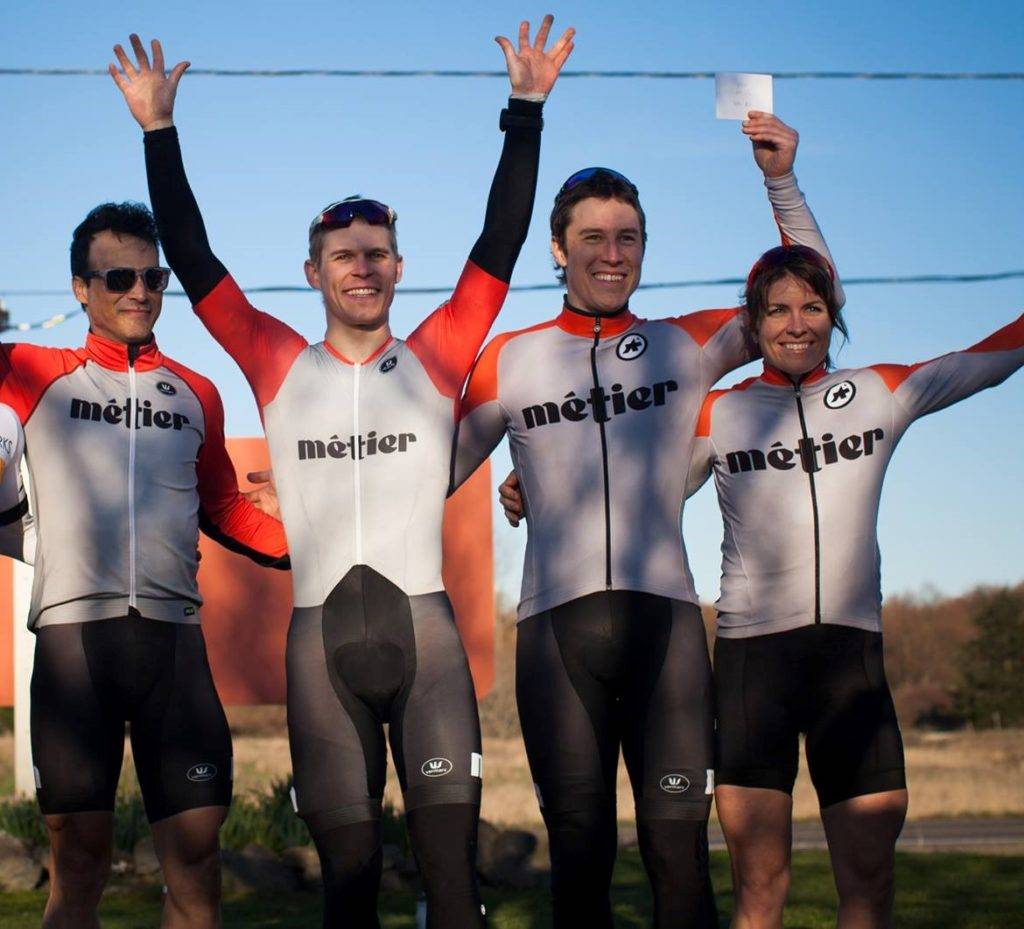
What was it like to be a member of Team USA?
Getting the invitation to ride in the Tour of California (ToC) as my first professional race in 6 years was the opportunity of a lifetime. I didn’t just get a random call though—I had put in a lot of work to get noticed again. I used my previous road connections to get an invite to the USA Cycling Talent ID camp for track. I worked so hard in the winter to work on my weaknesses because I knew this was basically first cuts for my quest to the 2020 Olympics. Long story short, I did great at camp and got an invite for the next camp in June. When I got back from that first camp, I celebrated with a Tuesday night Hot Laps around Mercer Island, and while we were having post-ride drinks afterwards, Kristin Armstrong called me. Of course, I answered. She said, “Jen, you need to be uncomfortable sometimes to be your best—what would you think about joining the USA National Team as a support role for Megan Guarnier in the Tour of California?” I was excited–and scared—and naively said, “Absolutely. I just rode 100 miles a couple weekends ago. I can do it!”
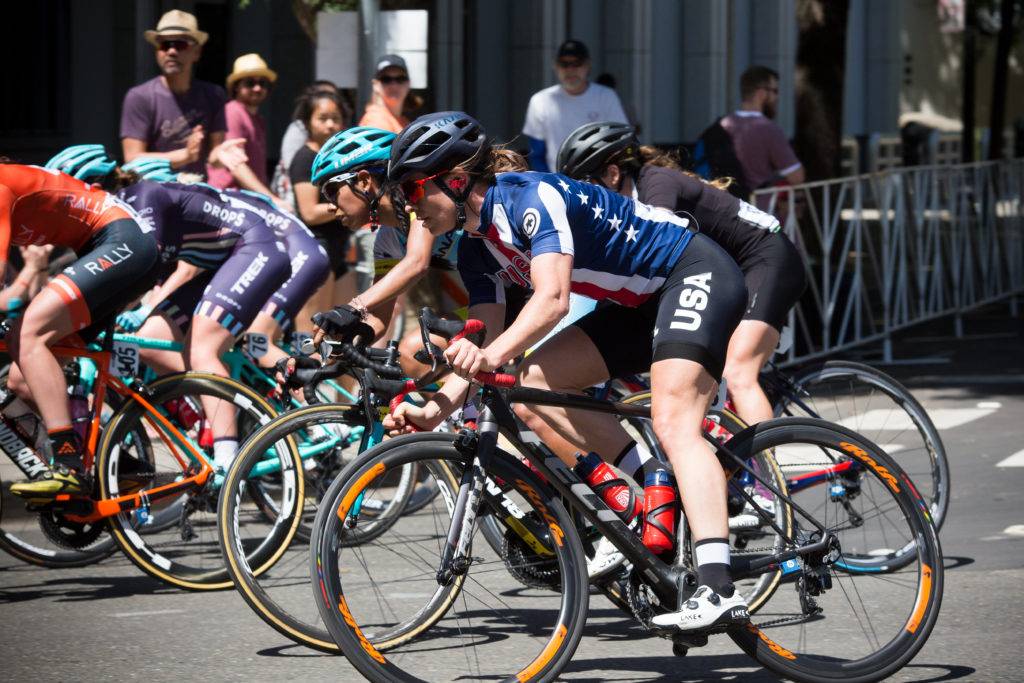
What were your objectives for ToC?
Boels Dolman Cycling Team wasn’t attending ToC so Megan Guarnier and Skylar Schneider were available to race for Team USA. It turned out that 4 of the 6 members of Team USA all raced for TIBCO in 2012, so it was bit of a reunion tour—and so fun to catch up.
My role was to do whatever was needed for Megan—which meant anything from chasing down attacks, keeping her out the wind, bringing a bottle—whatever was needed. This also meant getting her to the final climb in the South Lake Tahoe Stage—the obstacles for me were getting over a 20-minute category 2 climb with the world-class bunch of riders and then navigating the 50+ miles of rollers and wind before dropping her off for the final category 1 mountain climb. It was really tough for me. I popped off the group a couple of times but managed to claw myself back with some time trial skills. Jumping into a world tour race and riding inches away from 95 women was a little nerve racking and I found myself overly cautious and willing to take the wind to feel safer. I think this is expected after so long out of racing in these conditions, but I am proud that I made it through safely and did my job successfully.
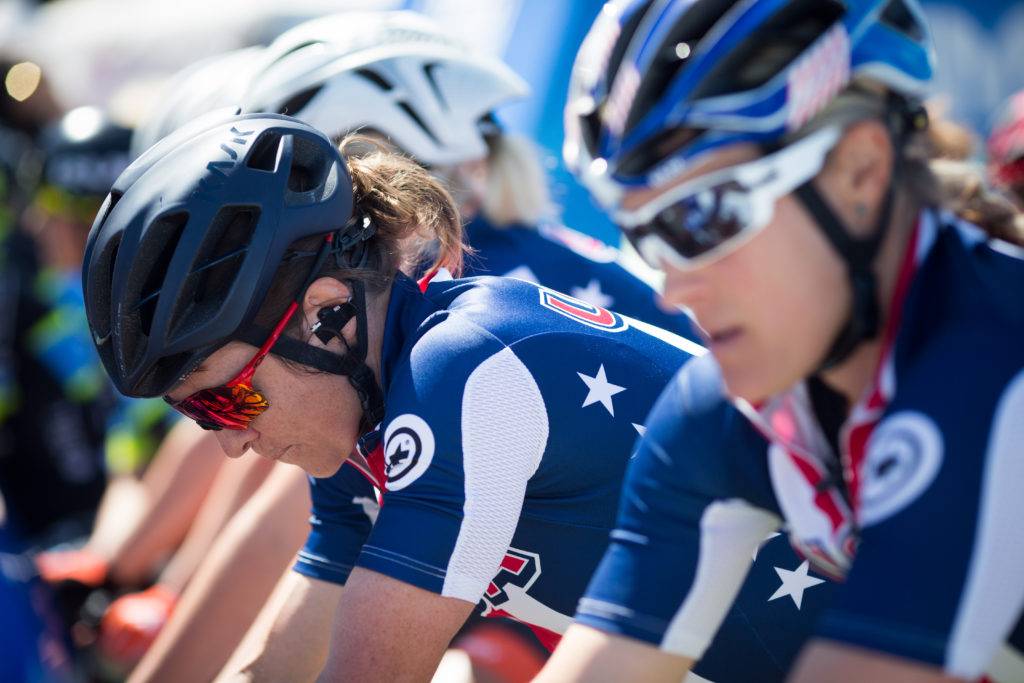
I think many competitive athletes (like myself) like to make plans, have data, and control every variable. When I re-started cycling, I thought if I perfectly controlled everything-—the grams of food I ate, eliminate alcohol, changed my entire life to revolve around riding the track and training—-I thought I would succeed. I didn’t. It just lead to me being crazy and unhappy. Once I just said ‘F-it,’ had a drink, ate what I wanted, moved back to the city, and rode rides for fun versus data, I got exponentially better. (I think there’s a diet/performance book in there somewhere.) I just try to remember that I don’t have to do this because I am good at it and I can quit whenever I want—but I won’t quit because that’s not me. I want to make the 2020 team and truly believe I can do it—and that’s enough to keep me going…or until USA Cycling tells me otherwise.
How did participating in ToC fit into your Olympic plans?
Being asked by Team USA to be in the mix definitely helps build a good reputation, finishing the race and contributing shows grit and willingness to seize opportunities, and fitness-wise, it was great training. You don’t have to train exclusively on the track to be great on the track. There were multiple Olympic medalists in the team pursuit racing in the group at ToC—if that’s a testament to diversity in training.
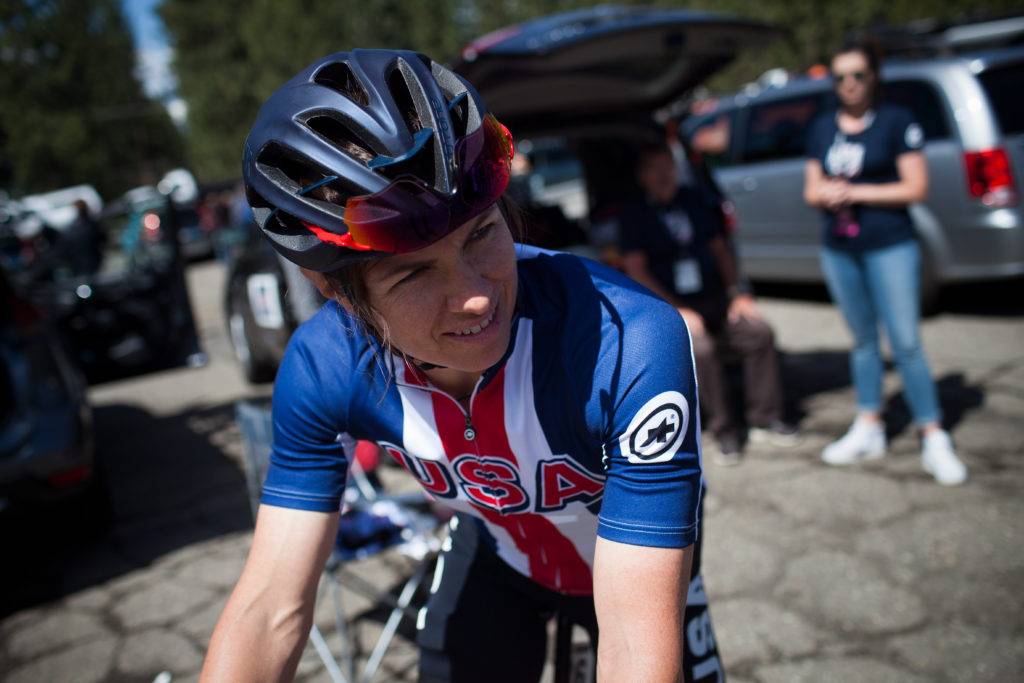
Do you have plans to do more road racing?
My number one objective is competing in timed track events and getting fast enough to be in the pool of 8-10 women USA Cycling is looking to build as potential for the team pursuit. I will do some local racing and, of course, be available if Kristin calls again 😊 There’s such a big pool of very talented women who are targeting road racing, so I would imagine those will be the ones USA Cycling calls in the future.
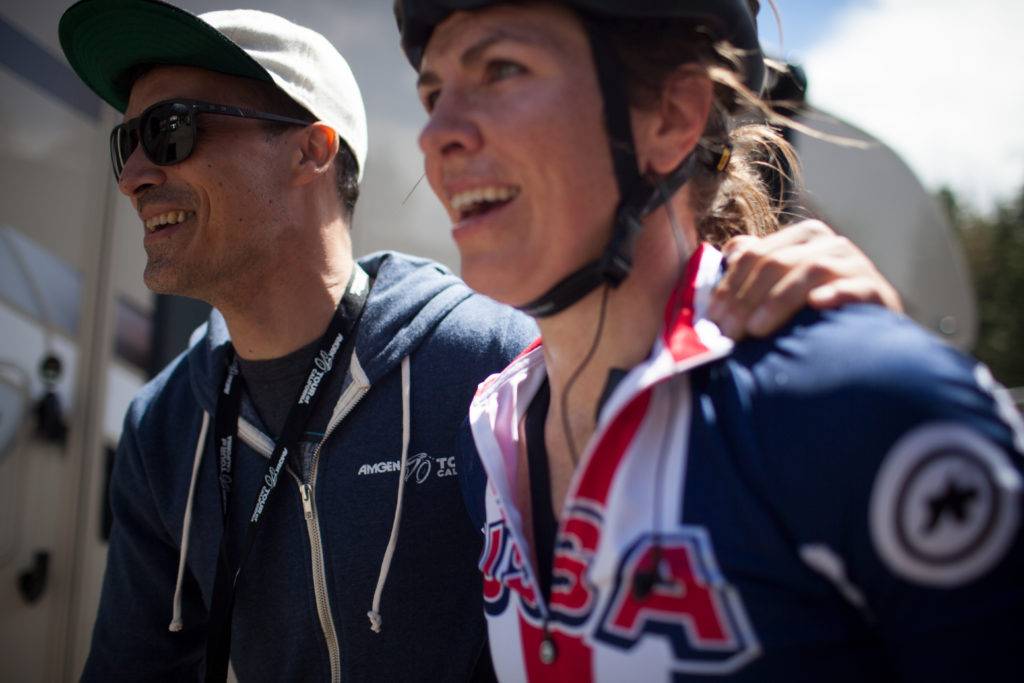
You credit your coach and boyfriend, David Richter, as being your most important supporter. How he has helped?
Ah, back to love watts. David and I had known each other since 2010, but never really talked for more than a few minutes until this past Fall. We hit it off and started dating and riding together. He just made cycling fun again for me. Besides being a great cyclist, he is also a great coach. We had fought the idea of him coaching me for a while because I wasn’t sure if I wanted to race and well, it’s not always the best idea to mix the two dynamics. Eventually, we decided to just try it and it has worked out awesome. My training plan is very science based—e.g., using MOXY to track my SMO2 in training, hypoxic mask training, and tracking recovery with OmegaWave readings. But most of all, I can’t imagine anyone else caring as much about not only my performance, but also my happiness—and that’s the best thing I could have in a coach. Because he knows me so well, he also helps me to see outside of my notorious tunnel vision, have fun, and take it day by day. And, he gets it—and was right by my side of Tour of California which kept me relaxed.
